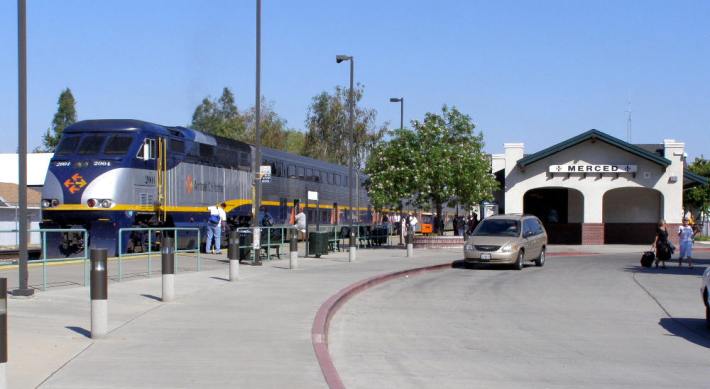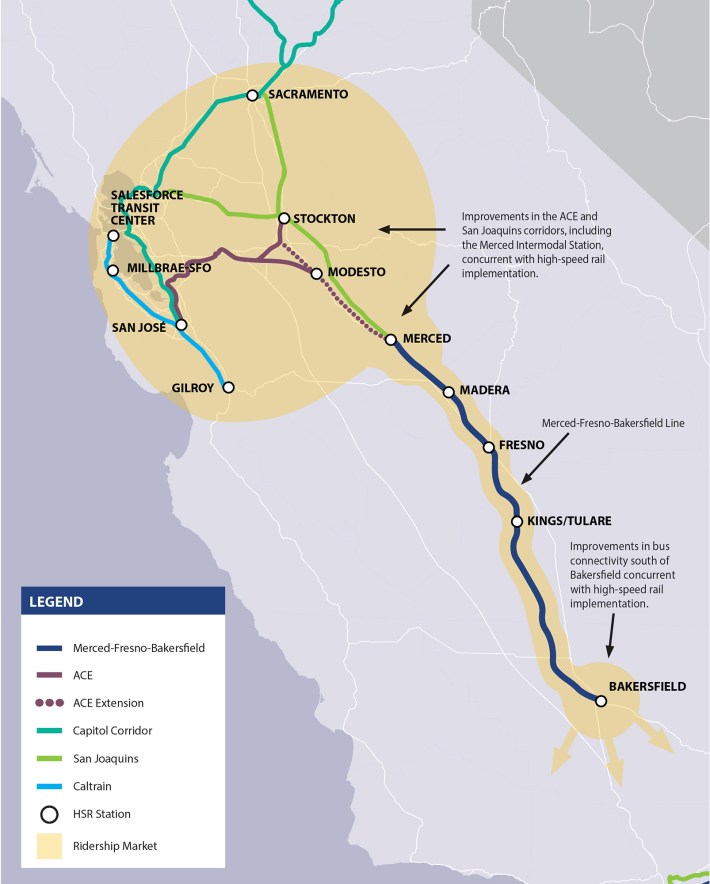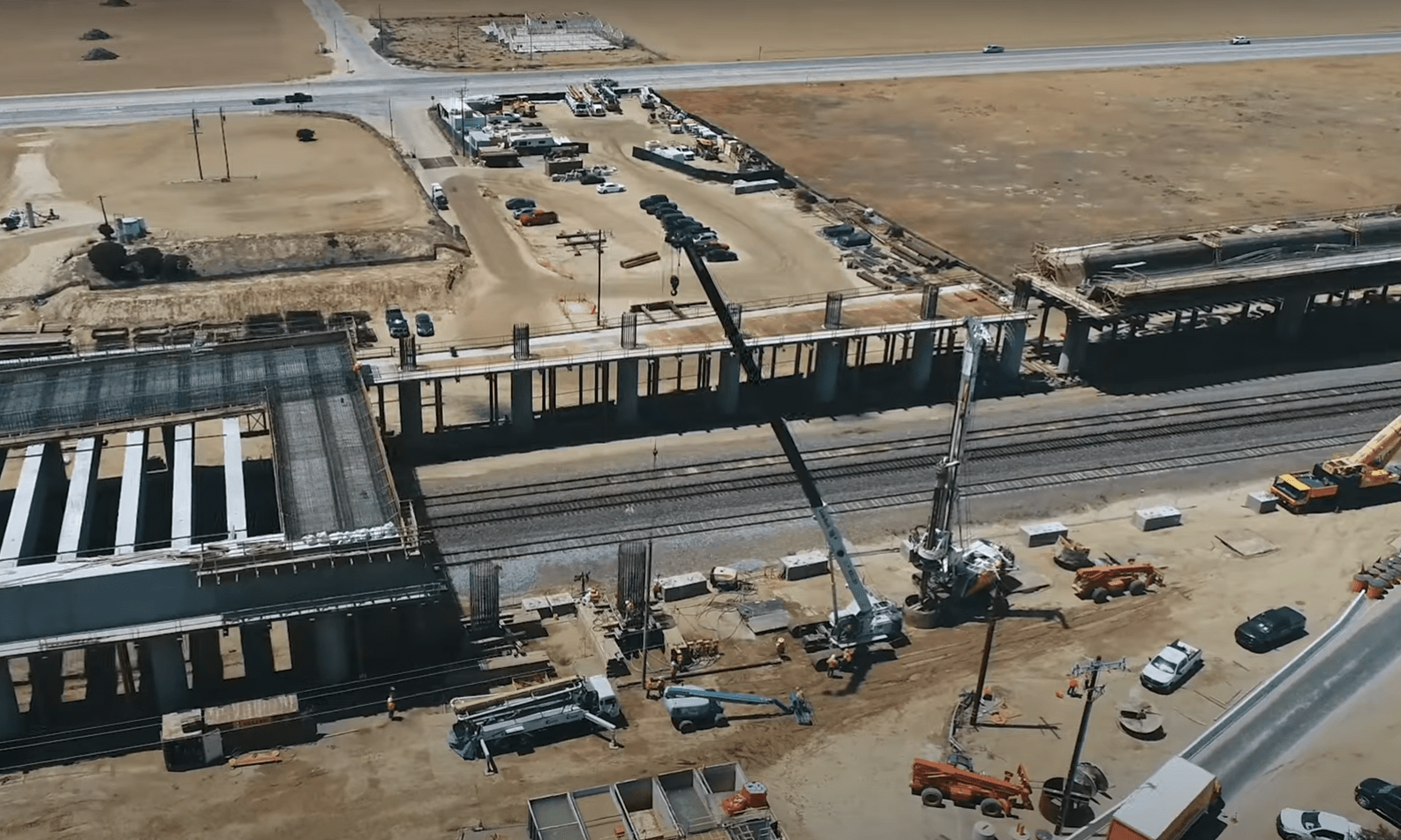The $1 trillion infrastructure bill winding its way through Washington has lots of pots that could be accessed to complete California's bullet train project between Anaheim, Los Angeles, and San Francisco. However, advocates have been disappointed that there isn't a specific pot for High-Speed Rail (HSR) like there was in 2009, of which California was the largest beneficiary. But that could be about to change. The House Transportation and Infrastructure Committee (T&I) reconciliation of the bill is advancing, and it contains additional funds specifically for HSR.
From Politico's coverage:
T&I’s reconciliation section is chock full of progressive transportation priorities. It’s got $10 billion for transit, tucked into a new joint HUD/FTA program on housing access. It also has $10 billion specifically for high-speed rail, money that many Democrats have been calling for.
That means real high-speed rail, as in the 160-mph-and-over variety, not some incrementally faster diesel project or battery powered train. This is in addition to the $66 billion the White House is seeking to advance passenger rail service nationwide. California could also apply for these funds for its HSR project.
From a White House statement:
The nation’s rail networks have the potential to offer safe, reliable, efficient, and climate-friendly alternatives for moving people and freight. However, unlike highways and transit, rail lacks a multi-year funding stream to address deferred maintenance, enhance existing corridors, and build new lines in high-potential locations. There are currently projects just waiting to be funded [emphasis added] that will give millions more Americans reliable and fast inter-city train service.
The breakdown comes out to about $57 billion from that pot that the California HSR Authority could compete for, in addition to the $10 billion that just got tossed on the pile.

What makes the additional $10 billion especially compelling is California has the only true HSR project that is actually under construction. As a reminder, in 2009, California's HSR project--then just a bunch of designs and papers with a voter-supported bond measure--garnered 40 percent of the federal funds. Now, it's in a much better position to compete, and can reasonably expect to gain at least that much, in addition to whatever it can garner from the more general rail-infrastructure funding.
Rod Diridon, Sr., Co-Chair of the US High Speed Rail Coalition, attributes the additional $10 billion to "the US HSR Coalition's negotiating successes with the House T&I Committee." This has involved some serious heavyweights, including former Republican and Democratic Transportation Secretaries Mineta, LaHood, and Foxx ...what a team! We're so happy to share appreciation for Andy Kunz and the venerable US HSR Association, supported by APTA and others, for sponsoring this massive coalition."
Meanwhile, California's State Assembly Speaker Anthony Rendon is so "concerned" about HSR not getting funded that he repeated his vow to make sure it's never funded.
With the money rapidly materializing in D.C. to fund the completion of California's bullet train project, Speaker Rendon thought it would be a good time to go on TV to reaffirm his commitment to making sure if the project is funded it isn't funded, because if he doesn't make sure it isn't funded it won't get funded. Or something.
Streetsblog has documented his double-talk, along with that of Transportation Committee Chair Laura Friedman, for some time now, along with their shifting justifications for blocking $4.2 billion in voter-approved California bond funds to electrify, lay tracks, and buy bullet trains for the Central Valley segment, currently under construction. “I think it's foolhardy to spend the remainder of the money without a sense of how the project is going to flow,” Rendon told NBC Bay Area. That's despite the fact that the state has comprehensive documents, called business plans, that explain exactly how the project is going to flow.
Rendon also repeated the tired lie that the Central Valley segment is isolated. “I think the, ‘If you build it, they will come,’ theory is pure fantasy,” Rendon told NBC Bay Area. “They will come where? How will they magically appear in Merced?” Reporter Stephen Stock, once again, participated in this lie.
See picture (and map) below of Amtrak's existing service from Sacramento and the Bay Area to Merced. That's Amtrak's San Joaquin, which stops in Merced:

For the record, here again is the map of the connecting rail services that currently exist (in addition to the ACE extension that's under way).

Since HSR runs on the same gauge tracks as Amtrak, it's possible to tow trains from Merced (albeit at slower speeds) directly to Sacramento, San Jose, and Oakland right now. Or passengers can do a cross-platform transfer between HSR and Amtrak. Nothing magical about it.






